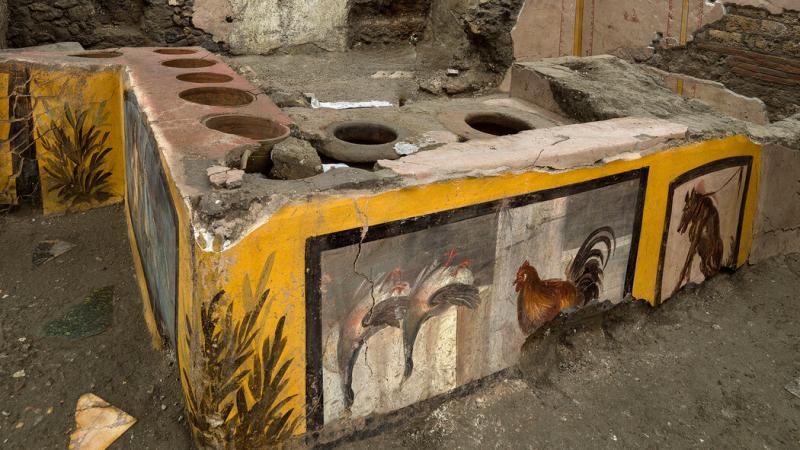It turns out fast food isn’t a modern invention. In the ancient Roman city of Pompeii, archeologists have discovered a well-preserved ‘thermopolium’, a commercial establishment where, in the ancient Greek-Roman world, it was possible to purchase ready-to-eat food (literally, “a place where (something) hot is sold”).
Unlike modern fast food chains though, which all look the same, the 2,000-year-old thermopolium was beautifully decorated as frescoes emerged from the excavations: two ducks hanging upside down, a rooster, a dog on a leash, a nereid riding a sea-horse. According to researchers, poultry was eaten with wine or hot drinks, therefore the animals depicted were likely butchered and sold at the food shop. (The dog was probably a reminder to customers to keep their dogs on a leash).
“As well as being another insight into daily life at Pompeii, the possibilities for study of this thermopolium are exceptional, because, for the first time, an area of this type has been excavated in its entirety,” said Massimo Osanna, the Director General of the Archaeological Park of Pompeii, adding that the finds will shed new light on the life, uses and nutrition of Pompeians.
The thermopolium is located in front of the ‘Gladiator Inn’, on the corner between the Vicolo dei Balconi and the Via della Casa delle Nozze d’Argento, in the Regio V area, which occupies the north-eastern sector of Pompeii, the ancient Roman city destroyed by the eruption of the Vesuvius volcano in 79 AD.
During excavations, which began in 2019, even food residues, animal bones and remains of victims of the eruption were found.
Thermopolia (plural of thermopolium) were widespread in the Roman world. Drinks and dried foods were stored in large dolia (jars) embedded in the counter. In Pompeii several were found.
The idea is to open the thermopolium to visitors in the spring, if Covid restrictions are loosened (currently the site is closed like all state museums in Italy).









